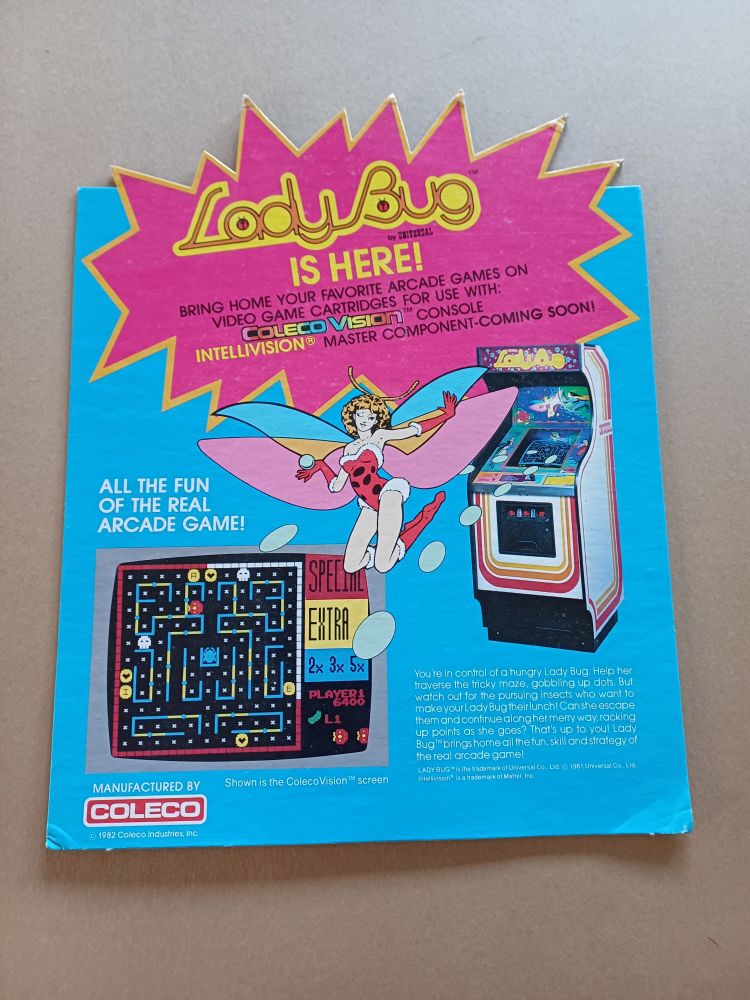
Source: Amusement Life 16 (April 1984)
Scan Source: DFJustin (Internet Archive)
#retrogaming #arcadegaming

Source: Amusement Life 16 (April 1984)
Scan Source: DFJustin (Internet Archive)
#retrogaming #arcadegaming






One of many games to come out in the wake of Space Invaders, Cosmic Guerilla's main defining feature is its aliens having the ability to steal bases - and your extra lives if you are not quick enough.
One of many games to come out in the wake of Space Invaders, Cosmic Guerilla's main defining feature is its aliens having the ability to steal bases - and your extra lives if you are not quick enough.




Released in 1979, Harem Cat used a video monitor in order to display both score and animations during play, predating both dot-matrix displays and "hybrid" tables such as Gottlieb's Caveman and Bally's Baby Pac-Man.




Released in 1979, Harem Cat used a video monitor in order to display both score and animations during play, predating both dot-matrix displays and "hybrid" tables such as Gottlieb's Caveman and Bally's Baby Pac-Man.



This features a handful of questions relating to the Mr. Do! series sent in, answered in-character by Mr. Do! himself.

This features a handful of questions relating to the Mr. Do! series sent in, answered in-character by Mr. Do! himself.
This version never made it to market and seemingly didn't last long on said location test, as this preview from an issue of C+VG is the only evidence it even existed.

This version never made it to market and seemingly didn't last long on said location test, as this preview from an issue of C+VG is the only evidence it even existed.



At the time, Universal USA were directly positioning themselves as being "the street operators' manufacturer".

At the time, Universal USA were directly positioning themselves as being "the street operators' manufacturer".
No Man's Land, interestingly, was the only Universal arcade game not to be distributed by Universal themselves in the US, instead being the first game to be distributed by Gottlieb.

No Man's Land, interestingly, was the only Universal arcade game not to be distributed by Universal themselves in the US, instead being the first game to be distributed by Gottlieb.
Universal distributed both this and its sister game, Space Ace, in Japan, which helps to explain why they focused more on laser games before (mostly) bowing out of the gaming industry in the mid-80s.


Universal distributed both this and its sister game, Space Ace, in Japan, which helps to explain why they focused more on laser games before (mostly) bowing out of the gaming industry in the mid-80s.
This is the only official port of Lady Bug to be commercially released in Japan.
This is the only official port of Lady Bug to be commercially released in Japan.
Branded as the sequel to Ocean's earlier Donkey Kong clone, Kong Strikes Back's main distinction is its "bombs" system, which allows the player to destroy the oncoming carts.
Branded as the sequel to Ocean's earlier Donkey Kong clone, Kong Strikes Back's main distinction is its "bombs" system, which allows the player to destroy the oncoming carts.
![A scan of the flyer for "Hunt Down", a rebranded Spanish release of the 1980 Universal arcade game, Space Panic; present on the flyer is a photo of the cabinet, a loose description of the game, and advertisements for other Andra machines: Desert Wars (Battlezone), Asteroids Luxe (Asteroids Deluxe), Money Mountain, and Air Bat le [sic] (Red Baron).
(scan sourced from https://www.recreativas.org/hunt-down-1989-andra-sa)](https://cdn.bsky.app/img/feed_thumbnail/plain/did:plc:svwjqizdhs73y5bndou4666w/bafkreifo3eglsehrkvtslsqahfgdj5myv6xjhvrzsnvt6jjg2rhccc6gli@jpeg)





The last known arcade game to be released under the Universal banner, Indoor Soccer's main defining feature is its quadruple-stick setup, with each player controlling the two members of each team.
The last known arcade game to be released under the Universal banner, Indoor Soccer's main defining feature is its quadruple-stick setup, with each player controlling the two members of each team.

